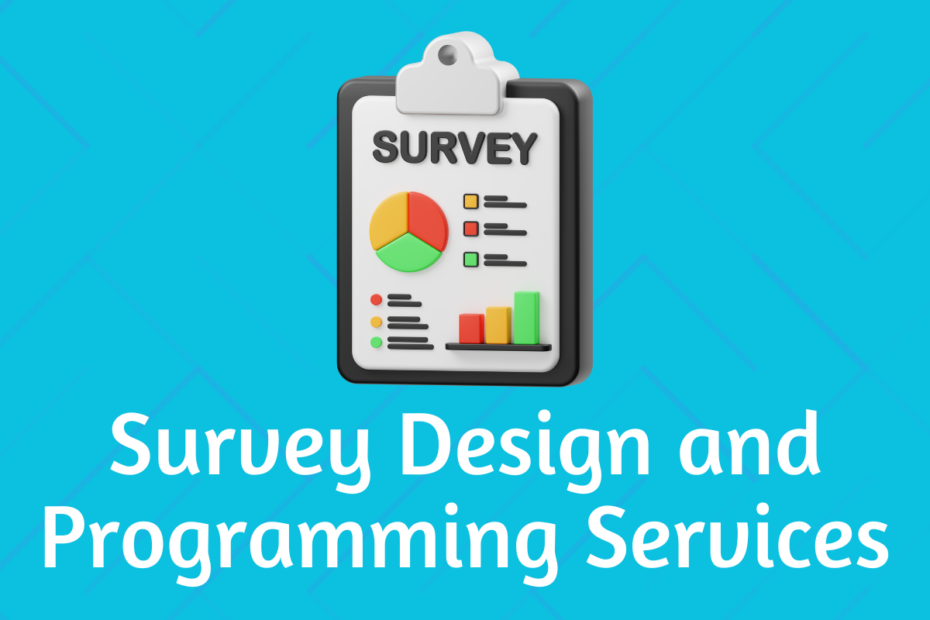In today’s data-driven world, well-designed surveys are essential for gathering actionable insights. The quality of your survey design and programming can make or break the effectiveness of your data collection, directly impacting the reliability and validity of the results. Here, we explore the best practices and expert considerations for professional survey design, focusing on platforms like SurveyMonkey and Qualtrics. We also discuss the vital role of programming in creating seamless, engaging, and scientifically sound surveys that achieve optimal response rates and data quality.
Why Professional Survey Design and Programming Matter
Survey design and programming are not merely about asking questions; they involve strategic planning, technical skills, and an in-depth understanding of survey psychology. Poorly designed surveys can lead to respondent fatigue, inaccurate answers, and a lower completion rate, all of which compromise the quality of your data. Professional survey services on platforms like SurveyMonkey and Qualtrics ensure that surveys are both user-friendly and technically sound, maximizing response rates and the quality of insights gathered.
Key Benefits of Professional Survey Design and Programming
1. High Response Quality
Experienced survey designers and programmers prioritize clarity and engagement in survey questions, making it easy for respondents to understand and answer them accurately. Professionally crafted surveys minimize ambiguous questions, leading to higher-quality responses and better decision-making data.
2. Enhanced User Experience
Surveys designed by professionals are accessible, intuitive, and visually appealing. These features help maintain respondent engagement from start to finish, improving completion rates and reducing drop-offs.
3. Efficient Data Collection
Professional programming ensures that survey logic, branching, and conditional paths function seamlessly, guiding respondents through relevant questions based on their prior answers. This customization saves time for respondents and enhances the relevance of the data collected.
4. Advanced Analytics Integration
Platforms like SurveyMonkey and Qualtrics offer analytics tools that can provide deep insights into respondent behaviors, answer patterns, and data trends. Expertly designed surveys leverage these analytics for optimized data interpretation, allowing businesses to extract meaningful insights and drive strategic decisions.
Essential Components of Effective Survey Design
Clear Objective Setting
Defining the survey’s purpose and desired outcomes is a critical first step. A clear objective enables survey designers to create focused, relevant questions that align with the survey’s goals. This also prevents “survey bloat” and improves data accuracy.
Question Types and Formatting
Using varied question types—such as multiple-choice, Likert scales, and open-ended questions—enhances the survey’s depth and keeps respondents engaged. Survey programming specialists use the platform’s tools to format these questions optimally, ensuring that data is collected in a structured, analyzable format.
Logical Flow and Branching
Programming conditional logic, or “branching,” is essential for creating dynamic surveys that adapt to each respondent’s answers. Branching helps avoid irrelevant questions, maintaining user interest while improving data quality. It also adds a personalized touch, making the survey feel more conversational and user-centered.
Pre-Survey Testing
A professional survey designer conducts rigorous testing before deployment to identify potential issues such as confusing wording, redundant questions, or technical glitches. Pre-survey testing allows for adjustments, ensuring that the survey operates smoothly for all users.
Programming Essentials for SurveyMonkey and Qualtrics
1. Advanced Logic and Scripting
Platforms like SurveyMonkey and Qualtrics offer advanced scripting features that can enhance the survey experience. For example, custom JavaScript can be used to create interactive elements or more complex question flows, while API integration enables the automated flow of survey data into external databases.
2. Data Piping
Data piping allows previously collected information to be inserted into subsequent questions, providing a personalized experience for respondents. Expert programming leverages data piping to create a seamless, contextualized experience that minimizes repetitive answers and keeps the survey relevant.
3. Custom Reporting
With the right programming, surveys on Qualtrics and SurveyMonkey can be configured to provide real-time, custom reports tailored to specific metrics. This feature enables clients to quickly interpret the results and make informed decisions based on current data trends.
4. Multi-Language Support
Global surveys often require multi-language support to reach diverse audiences. Professional survey programming includes language settings that ensure each question is presented accurately in the respondent’s preferred language.
Best Practices for Survey Distribution and Data Collection
Target Audience Segmentation
Identifying and segmenting your target audience is essential to ensure that survey results represent the views of relevant individuals. Using Qualtrics or SurveyMonkey’s audience segmentation tools, professionals can focus on specific demographics, behavioral characteristics, or geographic locations.
Timing and Follow-Ups
Strategically timed survey distribution maximizes response rates. For example, sending surveys during times when respondents are likely to be available and attentive increases the likelihood of full participation. Follow-up reminders are also beneficial, as they provide a gentle nudge to those who may have overlooked the initial survey invitation.
Data Privacy and Compliance
Professional survey services comply with data privacy laws, such as GDPR or CCPA, to protect respondent information. They implement best practices, including anonymization and secure data storage, to maintain respondents’ trust and ensure compliance with international data standards.
Sample Survey Workflow in Markdown (Mermaid Syntax)
For a visual overview of an effective survey workflow, the following diagram represents the process of survey creation, distribution, and data collection in a structured, professional survey program.
Conclusion
Investing in professional survey design and programming on platforms like SurveyMonkey and Qualtrics can significantly enhance data quality, response rates, and user engagement. With clear objectives, optimized question flow, and seamless technical execution, these surveys yield actionable insights that drive informed business decisions. When done right, a well-programmed survey does more than collect data—it builds an accurate picture of the respondent landscape, providing a valuable foundation for strategic growth and success.
